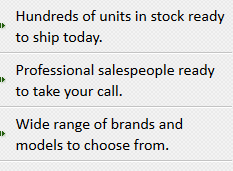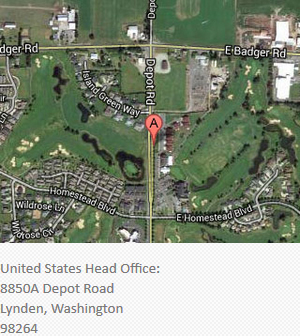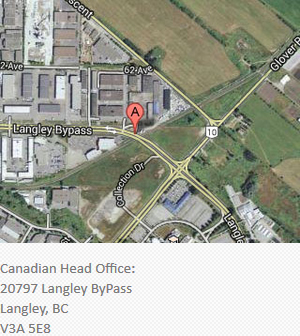About Global Lift Used Forklifts Burbank
Global Lift Burbank - Below are the classes of forklifts that describe the use and fuel choice of each kind of forklift. Certification is really needed for each class of forklift that the operator would be using.
Class 1
These forklifts are available with either pneumatic tires or cushion tires. Pneumatic tires are suggested for outdoor application during dry conditions. The cushion tired models are designed for indoor surfaces that are smooth. These are electrically powered vehicles which use industrial batteries, that make them suitable within closed environments where the quality of air is an issue. Hoist functions and travel are controlled by transistor motor controllers. These are versatile units commonly utilized everywhere from storage facility to the loading dock.
Class 2
For the kind of location where narrow aisles must be negotiated, this specific kind of forklift is suitable. They are effective at making the most of storage space. Their unique design makes them perfect where speed is required and for small spaces.
Class 3
These are battery-powered and hand-controlled models. Using a steering tiller, the operator can operate the lift while standing in front of the truck. The tiller has controls mounted on top and is moved laterally so as to maneuver the vehicle. The units that have smaller capacity utilize industrial batteries.
In the United States, 20,000 people are hurt each year in accidents connected to the utilization of forklifts. And every year roughly one hundred deaths are caused by forklift accidents. Luckily, correct training regarding operation procedures and maintenance could significantly reduce the chance of accidents. The basic safety regulations and suggestions below must be followed whenever using a forklift.
It is the job of the employer to make sure that the correct training program is provided to the staff and that forklift operators are qualified.. Training involves a combination of lectures, presentations, practical hands-on training and discussions. Reevaluation should occur every three years. Forklift operators must be up-to-date with current forklift safety rules. Forklift training program content covers general workplace hazards, dangers of forklift operations, dangers connected to using the particular forklift that the worker will be utilizing and workplace lighting and surfaces. An employee should be at least eighteen years old to utilize a forklift.
To make certain that the equipment is working safely and properly, forklift inspection should be carried out each day. The inspection involves keeping a checklist of things and reporting any concerns immediately.
Safe use of a forklift involves a safe and clean workplace. A safe work place means establishing "traffic lanes" that are designated for forklift use only. Warning systems such as flashing lights and horns should be in place to be able to indicate when there is a forklift approaching. Forklift docking stations should be kept in good repair and inspected daily.
General safety rules for forklift use comprise avoiding known hazards on the ground, like oil spills or wet spots; lowering or raising the load only when the forklift is stationary; ensuring there is enough clearance for the load; and keeping legs, hands and arms inside the vehicle during operation.
Forklifts are powered lift trucks which are used in a wide variety of industries to move heavy supplies and items. Forklifts are tough and dependable machines that are essential tools in warehouse and construction environments. Forklift units vary depending on the type of fuel which is used to power the lift truck and the kind of work setting.
Electric powered lift trucks are best for indoor environments, or in places with limited ventilation because they produce no exhaust fumes. They are designed with industrial strength batteries. As the electric forklift batteries require charging, the worksite should have a charging station. The batteries are tough and could be re-charged up to one thousand five hundred times before they have to be replaced. The charging station should be located in a ventilated area and include an emergency eyewash station and an acid spill kit.
Forklifts powered by liquid propane have several advantages over diesel and electric powered equipment making them quite common in industrial and warehouse settings. Propane engines are much cleaner than diesel-powered units. There is no down time needed to recharge an industrial battery, and the cost of electricity is more than the cost of propane. A forklift propane tank can be refueled easily and quickly by changing out the empty tank with a full tank. Usually an off-site supplier refills the empty tank, making refueling very efficient and safe.
For outdoor applications and rough terrain, the gas and diesel forklifts are the machinery of choice. These machines are quite common on construction sites and in lumber yards. Their disadvantages comprise fairly high maintenance needs, odorous exhaust and relatively high fuel costs. Their advantages include reliability in tough conditions and a longer lifespan than other units. Gasoline and diesel units would have to be refueled at a supply station on site which meets health and safety regulations.

Contact Info

Questions or Comments





